|
Vaughan Family Timestream® Maps |
| Home Biography People Places Multimedia: Making It Work On the Water Writings/Presentations |
Renaisance Man of the Sea
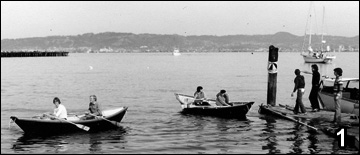
San Francisco Examiner
Wednesday, April 30, 1980, Pg 23
By Mildred Hamilton
Examiner photos by Dave Randolph
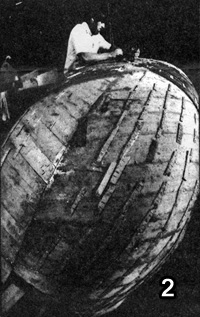 As part of their final examinations in late June, the first four graduates of the Bay Area Marine Institute will go to sea-or in this case on the Bay off Pier 66-in eight-foot dinghies they built themselves.
As part of their final examinations in late June, the first four graduates of the Bay Area Marine Institute will go to sea-or in this case on the Bay off Pier 66-in eight-foot dinghies they built themselves.
The Marine Services Technician degree they are earning will identify each as a "renaissance man of the sea." At least, that is the goal of Warren Taylor Vaughan III, the president and founder of the Marine Institute, who helped develop the new occupational title. Their comprehensive training in, out and about maritime skills will certainly make them desirable, employable assets to the recreational marine and small craft industry.
"Everything going on here," said Vaughan as his gestures took in the 76,000 square foot site of classrooms, waterfront, marine railway and boats in various stages of construction and repair, "is designed to stretch the imagination in the maritime field."
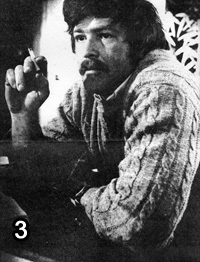 One of the early fund-raising projects of the young school borrowed from the world of rock'n roll. Vaughan was given the dance floor from the old Fillmore West-15,000 board feet of eastern hard rock maple, which the institute cut and planed and polished and sold, at $2.50 each, for kitchen counter cutting boards. "A marvelous fund-raiser," said Vaughan. "Too bad we don't have more."
One of the early fund-raising projects of the young school borrowed from the world of rock'n roll. Vaughan was given the dance floor from the old Fillmore West-15,000 board feet of eastern hard rock maple, which the institute cut and planed and polished and sold, at $2.50 each, for kitchen counter cutting boards. "A marvelous fund-raiser," said Vaughan. "Too bad we don't have more."
Vaughan, who dons his three-piece suit, his Massachusetts blue-blood background and the Warren Taylor Vaughan III personality when it is helpful, is known as Tay around the school, where he usually appears in sweater and jeans, his thick brown hair tousled and his vivid blue eyes sparkling with enthusiasm and challenge. The 35 year-old had invested three years of study and research at the University of California, San Francisco toward a Ph.D. in medical sociology "when I decided I didn't want to sit around in a tweed suit providing rhetoric for the next generation."
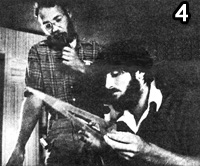 He burned his dissertation and research papers-on the socio-cultural impact of kidney transplant or "what do you do when you have 80 people with kidney failure and 24 machines to keep them alive"-in a 55 gallon drum on a cliff in Bolinas. "The next day I bought the wood to build a 31-foot ocean-going sailboat."
He burned his dissertation and research papers-on the socio-cultural impact of kidney transplant or "what do you do when you have 80 people with kidney failure and 24 machines to keep them alive"-in a 55 gallon drum on a cliff in Bolinas. "The next day I bought the wood to build a 31-foot ocean-going sailboat."
Vaughan had gone to sea earlier; he took a year off as an undergraduate to sign on a Norwegian freighter as an ordinary seaman. He had a year as an exchange student at the University of Vienna and earned hWe want to provide a resource pool of trained and competent craftsmen," said the practical educator, who looks more professorial than nautical since he shaved off his bushy beard.
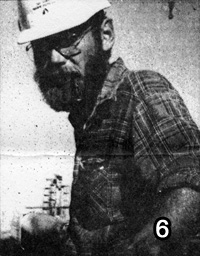 With some friends, he formed the non-profit educational and vocational training program, leased the abandoned boatyard at Pier 66 from the Port Commission, assembled a faculty for the accelerated apprenticeship course and evening specialty and continuing education classes, and, last October, began instruction.
With some friends, he formed the non-profit educational and vocational training program, leased the abandoned boatyard at Pier 66 from the Port Commission, assembled a faculty for the accelerated apprenticeship course and evening specialty and continuing education classes, and, last October, began instruction.
"We inundate students with theoretical information they translate in the work place One day one will repair a fiberglass boat. The next day he will install an electrical system; the next day paint or do fine woodwork. We want the graduating student to combine all the physical skills in an educational package. The Department of Labor created the new job title, the Marine Services Technician, for thisis B.A. in anthropology and sociology at Oberlin College. Along the way he studied cabinet making, became a journeyman carpenter and built a house.
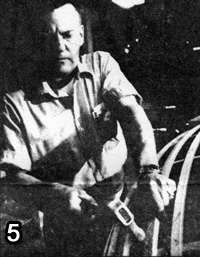 He built his own boat, the Great Bear, and sailed it 17,000 miles before he signed on as master carpenter to rebuild the Intrepid for the 1974 America's Cup defense. Serving as dean of the Chapman School of Seamanship in Florida, as western regional director of the Oceanic Society and head of his own engineering and marine surveying company here preceded his organization of the Marine Institute.
He built his own boat, the Great Bear, and sailed it 17,000 miles before he signed on as master carpenter to rebuild the Intrepid for the 1974 America's Cup defense. Serving as dean of the Chapman School of Seamanship in Florida, as western regional director of the Oceanic Society and head of his own engineering and marine surveying company here preceded his organization of the Marine Institute.
Vaughan sat in his tiny office on the second floor of the Pier 66 headquarters and classroom building and talked about his ideas to link jobs with the pride of craftsmanship, to blend the old marine skills with modern techniques and technologies.
"A great need exists for craftsmen and technicians versed in many skills at once-woodworking, fiberglass, engine mechanics, electrical systems, coatings and finishes. On the job in a boatyard, dealership or marine operation, tasks vary, and all these skills are drawn upon in the normal course of work. program." Danish-born Fred Andersen, who trained at the Norwegian boatyard of Colin Archer and then built sport fishing boats in Florida, is dean and head instructor of the Marine Institute.
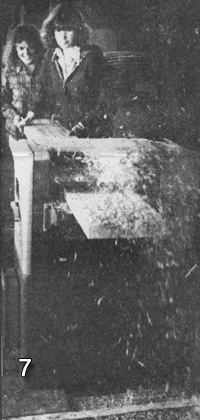 Members of the first class are Hank McLoughlin, 27-year old liberal arts graduate of St. Mary's College who is working part-time as a waiter to help finance his ambition to become a professional boat builder; Elie Sawaya, 20, who came here from mechanical engineering studies at the University of Dayton to seek marine mechanic training, Gil Dech, who is making a career change at age 51 from being a printing company superintendent "with too much pressure," to going into the marine service business; and David Vaughan, 19, whose jobs since his Ojai Valley High School graduation have taken him from washing dishes to junkyard crew, and who looks forward to building boats.
Members of the first class are Hank McLoughlin, 27-year old liberal arts graduate of St. Mary's College who is working part-time as a waiter to help finance his ambition to become a professional boat builder; Elie Sawaya, 20, who came here from mechanical engineering studies at the University of Dayton to seek marine mechanic training, Gil Dech, who is making a career change at age 51 from being a printing company superintendent "with too much pressure," to going into the marine service business; and David Vaughan, 19, whose jobs since his Ojai Valley High School graduation have taken him from washing dishes to junkyard crew, and who looks forward to building boats.
Long hours in the classroom are mixed with dedicated sessions in the hard hat shop area as they build their eight foot dinghies with western red cedar planking and mahogany transoms. Another project is taking apart a 40-foot motor launch donated to the school and, using their own plans, putting it back together to turn it into a commercial fishing boat. The huge shop also is the scene of seminars featuring new materials, work on a 25-foot experimental sailboat designed by Anderson, repairs and restoration of several boats, including a venerable 1920 canoe made by Maine's famed E.M. White.
"There is a lot of satisfaction to be derived from seeing a job through and producing a project worthy of pride." said Vaughan, who is now preparing a catalogue for the September class, to be expanded to 20.
One woman has applied. "She is a lady after my own heart," said Vaughan. "She is a 30 year old who decided she wanted to work around boats instead of being a sociologist. - She is now working in a boat shop in Maine. She wrote to the Marine Institute 'I have looked everywhere for a program like yours. Please let me in.' "
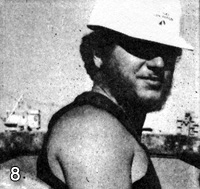 Vaughan, who has a captain's license but says he runs his school "more laid back than as a tight ship," said applicants must be 18 years old, possess a high school diploma, be in good health and have serious marine career interests. Tuition for the 40-week certificate program of the private learning facility is $4,000.
Vaughan, who has a captain's license but says he runs his school "more laid back than as a tight ship," said applicants must be 18 years old, possess a high school diploma, be in good health and have serious marine career interests. Tuition for the 40-week certificate program of the private learning facility is $4,000.
"Our philosophy is not to become dependent on federal money. We have been approved as a non-profit educational institution and we want to remain independent. All our programs are self sustaining, and we do have some scholarships through the mayor's office."
The school chief, who puts in exhausting 12 hours days- "but I would die locked in a 9 to 5 job"-spent a year getting the school location. The boatyard was in a condition "of extreme disrepair and our big problem has been capital for improvements. We are moving along and as we get money, we spend it wisely. We have no rich backers."
Vaughan does have a lot of friends and associates in the marine world who are impressed with the progress at Pier 66. He also sits on the California Maritime Academy industry advisory council and the mayor's central waterfront committee.
"We want to be part of the new waterfront, and we'll talk to anyone with a career interest in small craft and the maritime field. We have a lot of ideas about the future. We want to do experiments in reducing marine energy use, we want to be involved in everything from teaching kids how to sail to serious scientific projects. We want to partake fully in the world."
He provides the role model for his students. In a corner of his crowded office, his cello case leaned against the wall. "I've played the cello for 12 years. Sometimes after a long day in the classes and shop, I pull it out and play Bach at midnight. The sound is magnificent against the wind, and the contrast appeals to me."
CAPTIONS
1. The Bay is the classroom for the Bay Area Marine Institute on Pier 66.
2. Warren Taylor Vaughan III, called Tay at the school he started, gave up medical sociology to begin a career linked with boats and sailing.
3. Institute head instructor Fred Andersen, standing, helps student David Vaughan with a class assignment.
4. David Vaughan works on the boat he is building as part of his studies.
5. Emily Ford (in the plaid shirt) and Debbie Smith use a planer to resurface floor boards from the Fillmore West, which were turned into cutting boards to raise funds for the fledgling Institute.
6. Gil Dech, who is changing careers at 51, builds his own dinghy.
7. Instructor Andersen.
8. Student Eli Sawaya.